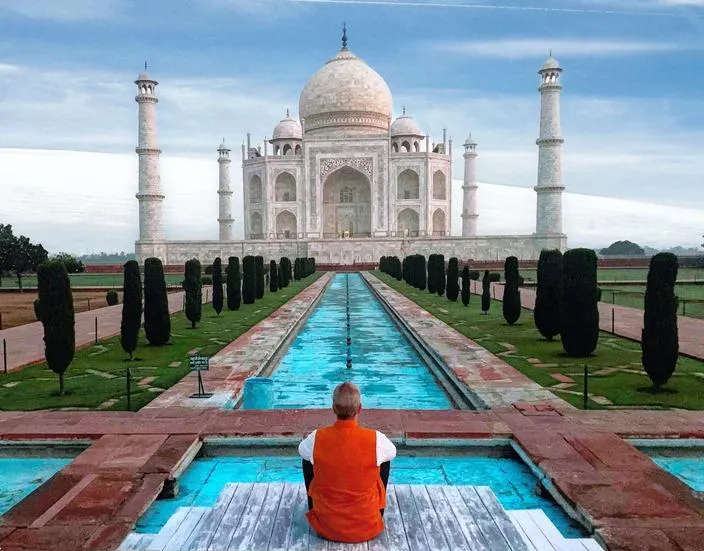
Situated on the Yamuna River’s banks in the ancient city of Agra, India, the Taj Mahal is a testament to architectural beauty and a timeless representation of love.
Commissioned in 1632 by the Mughal Emperor Shah Jahan in memory of his beloved wife Mumtaz Mahal, this ivory-white marble masterpiece continues to captivate millions of visitors with its unparalleled beauty and rich history.
A Glimpse into History
The Taj Mahal’s story begins with the undying love between Shah Jahan and Mumtaz Mahal. Mumtaz, the emperor’s favorite wife, passed away while giving birth to their fourteenth child.
Heartbroken by her death, Shah Jahan vowed to immortalize their love through a monument that would surpass all others. Thus, the Taj Mahal was born, serving as Mumtaz Mahal’s final resting place and a testament to their enduring bond.
Architectural Grandeur
The Taj Mahal stands as a testament to the genius of Mughal architecture. Designed by a team of skilled artisans and architects from across the empire, its symmetrical layout and intricate details reflect a harmonious blend of Persian, Islamic, and Indian architectural styles. The main mausoleum, crowned by a majestic dome and flanked by four minarets, exudes grace and elegance from every angle.
Intricate Artistry
What truly sets the Taj Mahal apart is its exquisite craftsmanship and attention to detail. The façade of the mausoleum is adorned with delicate marble inlays and intricate carvings, including verses from the Quran and floral motifs that seem to dance in the sunlight.
Inside of Mahal
Inside, the cenotaphs of Shah Jahan and Mumtaz Mahal are enclosed in a chamber adorned with precious gemstones and intricate lattice work, creating an atmosphere of serenity and reverence.
Symbolism and Significance
In addition to its breathtaking architecture, the Taj Mahal has profound metaphorical meaning.. Its construction was not only a declaration of Shah Jahan’s love for Mumtaz Mahal but also a testament to his power and wealth as a ruler.
The mausoleum’s layout, with its perfectly symmetrical gardens and reflecting pool, represents the paradise described in Islamic scripture, where the faithful are promised eternal bliss.
Preserving a Legacy
Recognized as a UNESCO World Heritage Site, the Taj Mahal is subject to ongoing efforts to preserve its beauty and integrity. Conservation initiatives aim to combat pollution, environmental degradation, and the effects of aging on its marble façade.
Place of enjoy
Strict regulations govern visitor access and activities within the monument complex to ensure its long-term preservation for future generations to enjoy.
A Timeless Destination
Visiting the Taj Mahal is a journey through time and emotion. Whether bathed in the soft light of dawn or glowing in the hues of sunset, the Taj Mahal never fails to inspire awe and wonder.
Visitors from around the world flock to its gates, drawn by the promise of experiencing one of humanity’s greatest architectural achievements and bearing witness to a love story that transcends the ages.
Conclusion
In a world filled with wonders both natural and man-made, the Taj Mahal stands as a shining beacon of love, beauty, and architectural brilliance. Its timeless allure continues to capture the hearts and imaginations of all who gaze upon it, reminding us of the power of love to transcend time and space.
As the sun sets on another day at the Taj Mahal, one cannot help but marvel at the enduring legacy of Shah Jahan and Mumtaz Mahal—a legacy that will continue to inspire generations to come.
Top of Form
